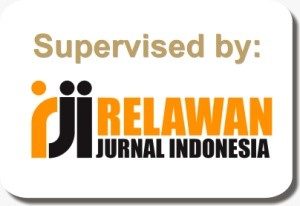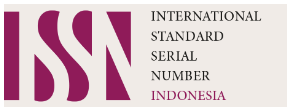Corpus-based Voyant Tools for Teaching IELTS Writing: Design and Implementation
Abstract
This conceptual paper aims to present practical guidelines for integrating Voyant Tools into the design of IELTS writing classes, particularly in the English as a Foreign Language (EFL) context. The paper adopts a tool-application demonstration approach to propose instructional steps, drawing on a synthesis of literature in corpus linguistics in EFL teaching, Voyant Tools for writing, and Voyant Tools for teaching IELTS writing, which becomes the theoretical foundation of the practice. The method involves introducing Voyant Tools’ interface and key functions, fetching data, selecting keywords, and applying the tool in classroom instruction. The proposed procedure highlights how Voyant Tools can serve as a valuable solution to expose learners to authentic language patterns and enhance their awareness of academic writing style, thereby contributing to their improved writing performance. This approach has implications for EFL instructors to seek more accessible, corpus-based teaching methods and for researchers exploring digital tools in language education. It is recommended that more educators, as well as students, incorporate similar tools in other areas of language skills. The limitation of this paper is acknowledged regarding the absence of empirical classroom testing across more varied learner backgrounds.
References
Arndt, R. (2022). Vocabulary in digital science resources for middle school learners. Applied Corpus Linguistics, 2(3). https://doi.org/10.1016/j.acorp.2022.100023
Barbieri, F., & Eckhardt, S. E. B. (2007). Applying corpus-based findings to form-focused instruction: The case of reported speech. Language Teaching Research, 11(3), 319–346. https://doi.org/10.1177/1362168807077563
Boulton, A. (2017). Data-Driven Learning and Language Pedagogy. In Language, Education and Technology (pp. 181–192). Springer International Publishing. https://doi.org/10.1007/978-3-319-02237-6_15
Buzarna-Tihenea, A. (2020). Text Analysis Tools in ESP Teaching. Case Study. https://seoscout.com/tools/keyword-analyzer
Cheng, W., & Warren, M. (2007). Checking understandings: Comparing textbooks and a corpus of spoken English in Hong Kong. Language Awareness, 16(3), 190–207. https://doi.org/10.2167/la455.0
Conrad, S. M. (1999). The importance of corpus-based research for language teachers. System, 27(1), 1–18. https://doi.org/10.1016/S0346-251X(98)00046-3
Divsar, H., & Heydari, R. (2017). A corpus-based study of EFL learners’ errors in IELTS essay writing. International Journal of Applied Linguistics and English Literature, 6(3), 143. https://doi.org/10.7575/aiac.ijalel.v.6n.3p.143
Flowerdew, L. (2015). Using corpus-based research and online academic corpora to inform writing of the discussion section of a thesis. Journal of English for Academic Purposes, 20, 58–68. https://doi.org/10.1016/j.jeap.2015.06.001
Harwood, N. (2005). What do we want EAP teaching materials for? Journal of English for Academic Purposes, 4(2), 149–161. doi: 10.1016/j.jeap.2004.07.008
Hua, Y., Lu, X., & Guo, Q. (2024). Independent corpus consultation for collocation use in academic writing by L2 graduate students. System, 127. https://doi.org/10.1016/j.system.2024.103515
Khojasteh, L., & Shokrpour, N. (2014). Corpus linguistics and English language teaching materials: A review of recent research. In Khazar Journal of Humanities and Social Sciences (Vol. 17). https://www.researchgate.net/publication /273064356
Lisboa, J. V. R., & Fromm, G. (2024). How to introduce students to linguistic research using Voyant Tools. Trabalhos Em Linguística Aplicada, 63(3), 545–563. https://doi.org/10.1590/01031813v63320248644435
Lusta, A., Demirel, Ö., & Mohammadzadeh, B. (2023). Language corpus and data driven learning (DDL) in language classrooms: A systematic review. Heliyon, 9(12). https://doi.org/10.1016/j.heliyon.2023.e22731
MacEnery, T., & Wilson, A. (2001). Corpus Linguistics. Edinburgh University Press.
Miguel, N. M. (2022). Using Voyant Tools to enhance learners’ reflections on their writing. In Teaching English with Corpora (pp. 155–157). Routledge. https://doi.org/10.4324/b22833-32
Moore, T., & Morton, J. (2005). Dimensions of difference: a comparison of university writing and IELTS writing. Journal of English for Academic Purposes, 4(1), 43–66. https://doi.org/10.1016/j.jeap.2004.02.001
Reese, S. D. (2022). Writing the conceptual article: A practical guide. Digital Journalism, 11(7), 1195–1210. https://doi.org/10.1080/21670811.2021.20093 53
Römer, U. (2004). Textbooks: A corpus-driven approach to modal auxiliaries and their didactics (pp. 185–199). https://doi.org/10.1075/scl.12.14rom
Römer, U. (2011). Corpus research applications in second language teaching. Annual Review of Applied Linguistics, 31, 205–225. doi: 10.1017/ S0267190511000055
Sealey, A., & Thompson, P. (2007). Corpus, concordance, classification: Young learners in the L1 classroom. Language Awareness, 16(3), 208–223. https://doi.org/10.2167/la453.0
Wachyudi, K. (2022). Penggunaan Voyant Tools dalam pembelajaran bahasa Inggris. Jurnal Educatio, 8(4), 1661–1668. doi: 10.31949/educatio.v8i4.3427
Wang, Q., Anthony, L., & Arshad, N. I. (2023). A content-controlled monolingual comparable corpus approach to comparing learner and proficient argumentative writing. Research Methods in Applied Linguistics, 2(2). https://doi.org/10.1016/j.rmal.2023.100053
Wright, J. (2020). Researchers, teachers, and learners seeing new possibilities with Voyant Tools. Teaching English as a Second or Foreign Language-Electronic Journal, 24(2). https://voyant-tools.org/doc/
Yunjung, K. (2025). A corpus analysis of prepositional phrase-lexical bundles in academic writing: L2 writers from Indo-European and Non-Indo-European languages. Applied Corpus Linguistics, 5(2).https://doi.org/10.1016/j.acorp.2025.100128

This work is licensed under a Creative Commons Attribution-ShareAlike 4.0 International License.
Authors retain copyright and grant the journal right of first publication with the work simultaneously licensed under a Creative Commons Attribution-ShareAlike 4.0 International License (CC BY-SA 4.0) that allows others to share the work with an acknowledgment of the work's authorship and initial publication in this journal.
Authors are able to enter into separate, additional contractual arrangements for the non-exclusive distribution of the journal's published version of the work (e.g., post it to an institutional repository or publish it in a book), with an acknowledgment of its initial publication in this journal.
Authors are permitted and encouraged to post their work online (e.g., in institutional repositories or on their website) prior to and during the submission process, as it can lead to productive exchanges, as well as earlier and greater citation of published work (See The Effect of Open Access).





